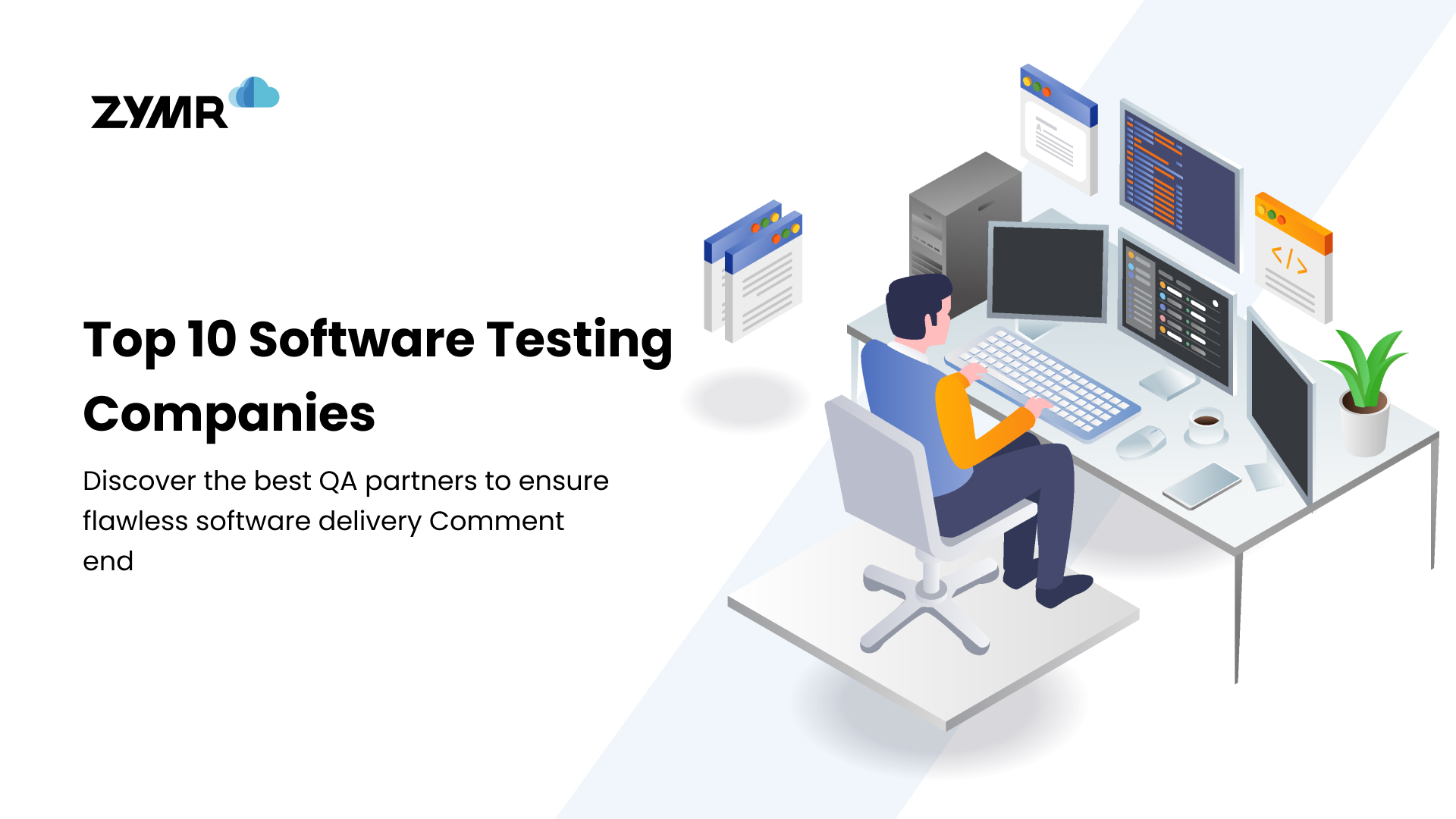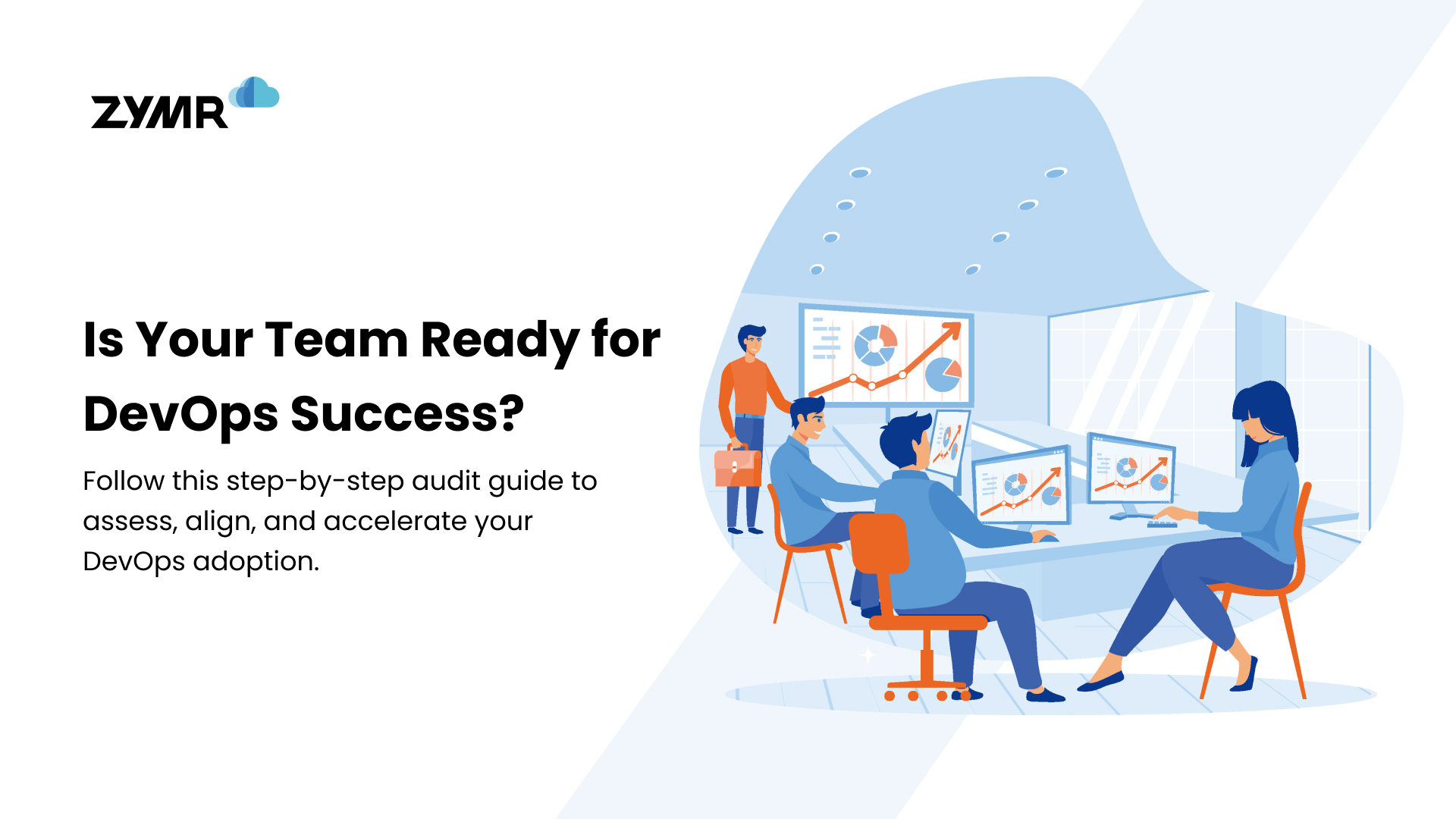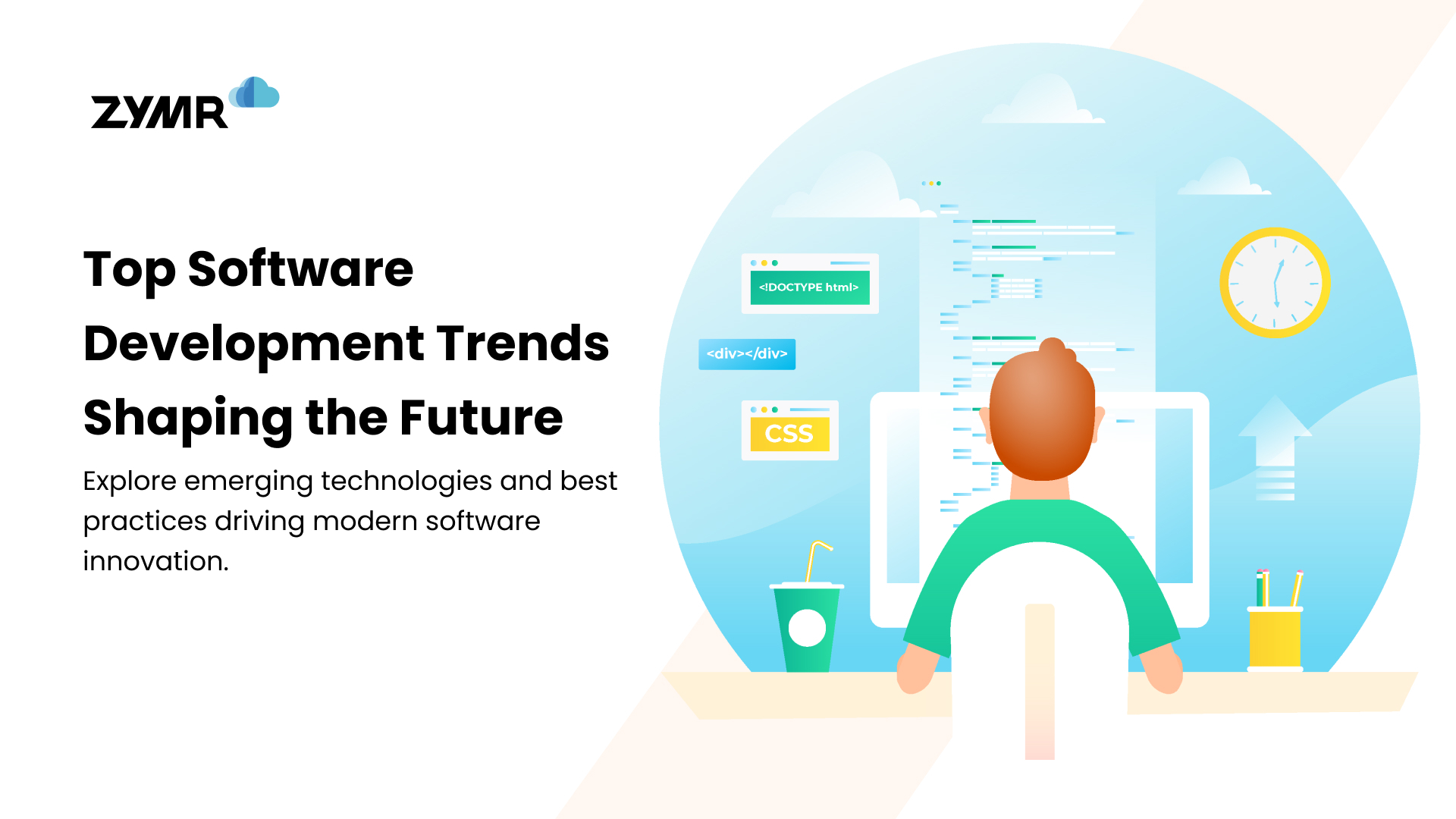Software Development for Startups: From Idea to Launch

Yogesh Karachiwala
AVP of Engineering
May 12, 2025
Launching a business is an exhilarating adventure, but transforming an idea into a successful product necessitates more than mere vision; it requires a solid technological foundation. Software development is the foundation for startup innovation, scalability, and expansion.
Did you know that professional developers will use AI-powered coding tools more significantly, from under 10% to 70% by 2027?
Further in the blog, we will explore everything related to software development and its importance in the startup domain. We have covered segments like risks, key considerations, and choosing the right approach for a startup.
The Strategic Importance of Software Development for Startups
In a fast-moving digital world, startups don’t just compete—they innovate or risk being left behind. Software development is the foundation of this innovation, driving everything from product-market fit to long-term scalability. Whether launching a SaaS platform, an AI-driven application, or an e-commerce solution, the right software strategy can determine success.
Software development for startups is the process of building scalable, cost-effective, and market-ready custom softwares for their emerging businesses. It involves MVP development, agile methodologies, cloud integration, AI-driven automation, and user-centric design to accelerate growth and innovation while optimizing resources.
Beyond just building a product, strategic software development accelerates time-to-market, ensures seamless user experiences, and distinguishes startups in crowded markets. It enables adaptability to evolving customer demands, industry trends, and technological advancements—turning bold ideas into disruptive digital solutions.
Some of the factors are stated below:
- Quick MVP Testing: Startups can mitigate risk and ensure users receive their concept well before scaling by creating MVPs (Minimum Viable Products) to test their ideas quickly in the market.
- Scalable Growth: Startups need well-designed software architecture to manage growth and adaptability. Robust and adaptable software can achieve scalability and success.
- Actionable Insights: The software's analytics allow startups to spot trends, find areas for growth, and take data-driven actions resulting in actionable insights.
- Custom Solutions: Custom software solutions help startups differentiate themselves with unique features, personalized experiences, and innovative functions that competitors cannot easily replicate.

Why Startups Should Invest In Software Development?
Startups should allocate resources to software development to create tailored, scalable solutions that foster innovation and improve user experiences. Utilizing agile approaches and data-informed insights allows startups to speed up growth, enhance operations, and remain competitive in ever-changing markets.
Software automation further streamlines workflows reduces manual effort, and maximizes resource efficiency—allowing teams to focus on innovation, customer acquisition, and strategic growth. Investing in intuitive, user-friendly software enhances the customer experience while prioritizing security ensures data protection and regulatory compliance. Together, these elements build a strong operational foundation and attract investor confidence, featuring the startup’s potential for growth and scalability.
Risks of Neglecting Software Development
Did you know that in 2019, Capital One Financial Corp. experienced a significant data breach that exposed personal information belonging to around 100 million people in the U.S. and 6 million in Canada?
The above is just an example of how software support and maintenance are more than routine procedures. Software development for startups involves various risks, and ignoring these factors can cause significant disruptions. Identifying and addressing all potential risks is crucial for a smooth development process.
Given below are some risks associated with neglecting software development and their potential solutions:
Limited Scalability
- Problem: Systems cannot handle growth or adapt to changing market demands.
- Solution:
- Migrate to cloud-based platforms that offer elastic scalability.
- Adopt microservices architecture for flexible and modular system design.
- Regularly assess and upgrade infrastructure to align with growth projections.
Operational Inefficiencies
- Problem: Manual processes slow productivity and increase costs.
- Solution:
- Automate repetitive tasks using tools like RPA (Robotic Process Automation).
- Streamline workflows with process optimization and digital transformation.
- Invest in integrated software solutions to reduce manual intervention.
Poor Customer Experience
- Problem: Frustrating interfaces and slow response times drive users away.
- Solution:
- Redesign user interfaces (UI/UX) for simplicity and intuitiveness.
- Implement faster response systems, such as AI-powered chatbots or real-time support.
- Gather customer feedback to continuously improve the experience.
Security Vulnerabilities
- Problem: Increased risk of data breaches and compliance failures.
- Solution:
- Conduct regular security audits and vulnerability assessments.
- Implement robust cybersecurity measures, such as encryption and multi-factor authentication.
- Stay updated with compliance regulations (e.g., GDPR, CCPA) and ensure adherence.
Competitive Drawback
- Problem: Falling behind tech-savvy competitors who innovate faster.
- Solution:
- Invest in R&D and emerging technologies (e.g., AI, IoT, blockchain).
- Monitor competitors and industry trends to identify opportunities for differentiation.
- Foster a culture of innovation within the organization.
Missed Automation Opportunities
- Problem: Wasted resources on repetitive tasks instead of innovation.
- Solution:
- Identify and automate high-volume, repetitive tasks using AI and machine learning.
- Train employees to focus on higher-value, strategic activities.
- Leverage tools like workflow automation software to optimize operations.
Revenue Loss
- Problem: Inefficient systems lead to missed sales and lower profitability.
- Solution:
- Optimize sales and marketing processes with CRM tools and analytics.
- Improve inventory and supply chain management to reduce delays.
- Enhance e-commerce platforms to capture more online sales.
Lack of Data-Driven Decision Making
- Problem: Failure to utilize insights for strategic growth.
- Solution:
- Implement advanced analytics and business intelligence (BI) tools.
- Train teams to interpret and act on data insights.
- Build a centralized data repository for real-time decision-making.
Investor Deterrence
- Problem: Weak tech infrastructure reduces funding opportunities.
- Solution:
- Showcase a clear roadmap for technology upgrades and innovation.
- Highlight ROI from tech investments to attract investor confidence.
- Partner with tech-savvy advisors or consultants to strengthen credibility.
Key Considerations Before Investing in Software Development
Investing in a software ecosystem can be fairly overwhelming. Comprehending the big-picture business goals is crucial. Here are some key considerations you may want to consider before investing.

- Business Objectives and Alignment: The key is aligning the project’s strategic goals with the enterprise’s big-picture achievements. It is essential to have a firm grasp of the broader business goals and the specific problems your project addresses.
- Future Growth and Scalability: Consider how the software will handle future growth in users and functionality. Choosing development approaches and technology stacks that can evolve with the business and scale seamlessly without needing frequent redesigns is essential.
- Security and Compliance Requirements: Prioritize security and ensure the software meets necessary regulatory compliance standards, such as GDPR or HIPAA, from the outset. Building security into the software’s architecture helps protect sensitive data and avoid legal penalties.
- Market Research and Competitive Analysis: Conduct thorough market research to understand customer needs and competitor products. Identifying unmet needs or opportunities in the market can ensure the software provides unique value and helps differentiate it from existing solutions.
Understanding the Software Development Lifecycle For Startup
For startups, mastering the Software Development Lifecycle (SDLC) is crucial to constructing scalable and high-performing software. A well-structured process enables efficient resource use, quicker time-to-market, and flexibility to adapt to changing user demands.

Below are the key stages of the SDLC, customized for startup environments:
Ideation and Requirement Analysis
Startups must identify a clear problem statement and gather user requirements to ensure product-market fit. Conducting market research, competitor analysis, and validating consumer feedback helps build a solid foundation. This phase reduces the risk of developing a product that doesn’t meet market demand.
Planning and Feasibility Study
A detailed roadmap is critical for effectively managing resources, budgets, and timelines. Startups should assess technology stacks, choose development methodologies (e.g., Agile, DevOps), and identify potential risks. Defining a Minimum Viable Product (MVP) strategy is key for early market validation and iterative development.
Design and Prototyping
User experience (UX) and user interface (UI) design are crucial for product adoption and user satisfaction. Interactive prototypes help visualize the product and gather early feedback. Startups should focus on intuitive design and scalability to support future growth and updates.
Development and Implementation
This phase involves coding the software using selected frameworks, languages, and architectures. Startups should adopt best practices like modular development, API-first design, and continued integration/deployment (CI/CD) to ensure efficiency, flexibility, and faster iterations.
Testing and Quality Assurance (QA)
Thorough testing is essential to identify and resolve bugs before launch. Startups should use automated and manual testing methods, including unit testing, performance testing, and security audits.
Deployment and Launch
Once the product passes all quality checks, it’s deployed to production environments. Startups should plan a seamless rollout, leveraging cloud solutions for scalability and flexibility.
Maintenance and Continuous Improvement
After launch, startups need to concentrate on providing continuous updates, security patches, and feature enhancements to maintain the product's relevance.
How to Choose the Right Development Approach For Startup?
Selecting the right development strategy involves finding the proper equilibrium between flexibility, speed, cost, and long-term scalability. By establishing clear objectives, startups can develop successful and sustainable software solutions.
Pick the Right Development Methodology
Different software development methodologies offer unique benefits. Some of them are stated below
- Agile development is perfect for startups that need adaptability, iterative launches, and continuous feedback. It allows teams to quickly adjust to changes and focus on user needs.
- The lean startup methodology complements this by advocating for a Minimum Viable Product (MVP) built through rapid iterations based on user input, minimizing waste.
- Meanwhile, DevOps bridges development and operations, fostering collaboration and automation to enable continuous integration and delivery (CI/CD). This approach ensures faster, more reliable software releases.
- The waterfall model works best for projects with well-defined requirements, offering a structured, phase-by-phase approach. However, its rigidity makes it less suitable for projects requiring frequent changes or flexibility.
Consider In-House vs. Outsourced Development
Assess whether to assemble an internal team for greater control or outsource development for cost savings and access to specialized skills.
Emphasize Scalability and Future Growth
Startups can ensure future growth by implementing software solutions that are designed to scale. This can be achieved using modular architectures, cloud-based technologies, and APIs.
Ideal Technology Stack
The choice of programming languages, frameworks, and cloud platforms impacts scalability and maintenance. Consider factors like:
Time and Budget Constraints
Strike a balance between cost efficiency and quality to avoid technical debt. Calculate the overall development cost, including infrastructure, tools, and ongoing maintenance.
Also Read: DevOps Implementation Plan: Key Steps, Tools, and Best Practices
How to Choose your Tech Stack for your Startup?
Below is a structure for choosing the right tech stack to support your startup's goals and growth.
Business Goals & Product Requirements
Align your technology stack with your startup’s objectives, whether it’s speed, security, or scalability. Ensure the stack supports the specific features and functionalities your product requires.
Scalability & Flexibility
Choose technologies that can scale with your business as it grows. Prioritize solutions that are flexible and adaptable to future needs or changes in direction.
Development Speed & Cost
Select frameworks and tools that enable faster development and deployment. Balance efficiency with budget constraints to optimize resource utilization.
Security & Compliance
Ensure the stack adheres to industry standards and regulatory requirements. Prioritize technologies with built-in security features to protect sensitive data.
Steps to Hire Software Developers for Startups
A startup's growth depends on hiring skilled software developers. By implementing an organized hiring strategy, startups can attract and assess top talent, building a strong development team to drive product innovation and scalability.
Screen for Technical Skills
To evaluate a potential hire's skills and strategies, consider incorporating coding challenges, reviewing portfolios and GitHub repositories, and conducting live coding interviews as part of your assessment process.
Assess Soft Skills and Cultural Fit
Seek developers who excel in communication, collaboration, and adaptability in dynamic environments. A problem-solving mindset and innovative thinking are essential for navigating complex challenges.
Run a Trial Period
Begin with a trial or contractual period to assess the developer's cultural fit, work ethic, and technical skills. This approach allows both sides to determine if the partnership is a good fit for long-term success.
Evaluate Startup Experience
Developers with experience working in dynamic startup settings may possess key advantages, including the ability to thrive in fast-paced work settings, adapt quickly to change and uncertainty, and manage diverse responsibilities.
How Zymr Makes the Startup Journey Easier?
A reliable software development company for startups is a game changer while navigating the journey. From turning ideas into reality to launching a product, the right approach to software development can save time, reduce risks, and set the foundation for growth. It’s all about finding the right balance between innovation, execution, and scalability to bring your vision to life.
At Zymr, we empower enterprises to achieve scalable, secure, high-performance software through AI-driven cloud, cybersecurity, and DevOps solutions. We accelerate innovation, optimize IT infrastructure, and drive seamless digital transformation, ensuring your business stays ahead of the curve and achieves real success.
Conclusion
FAQs
>
>
>
>
>
Have a specific concern bothering you?
Try our complimentary 2-week POV engagement
Our Latest Blogs








.svg)
.svg)
.svg)
.svg)
.svg)
.svg)
